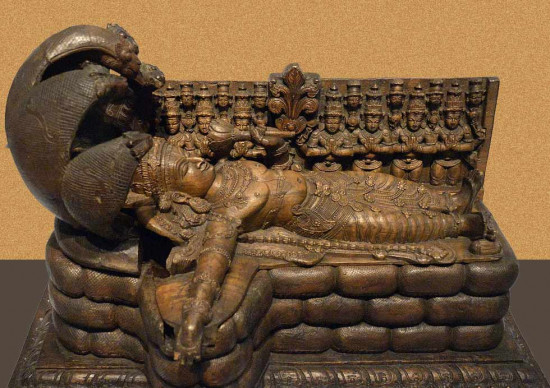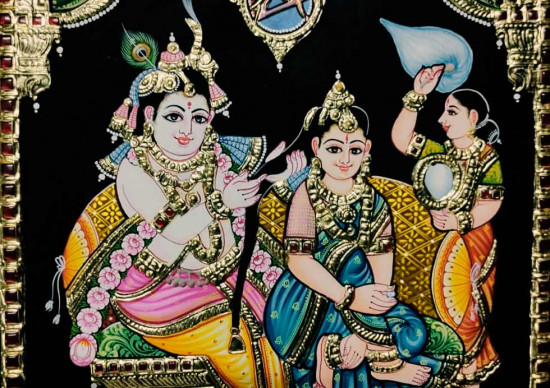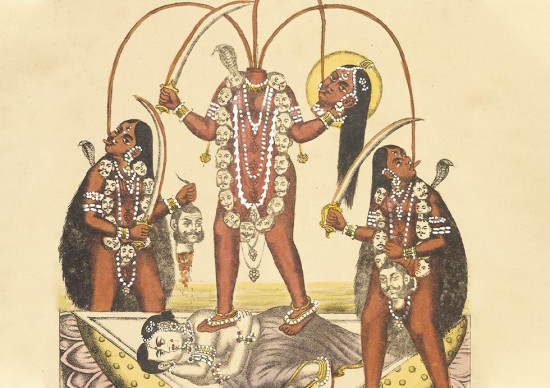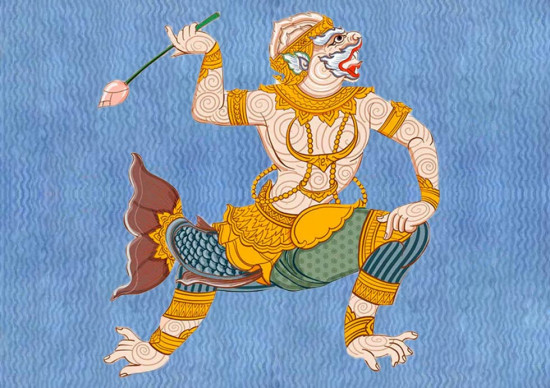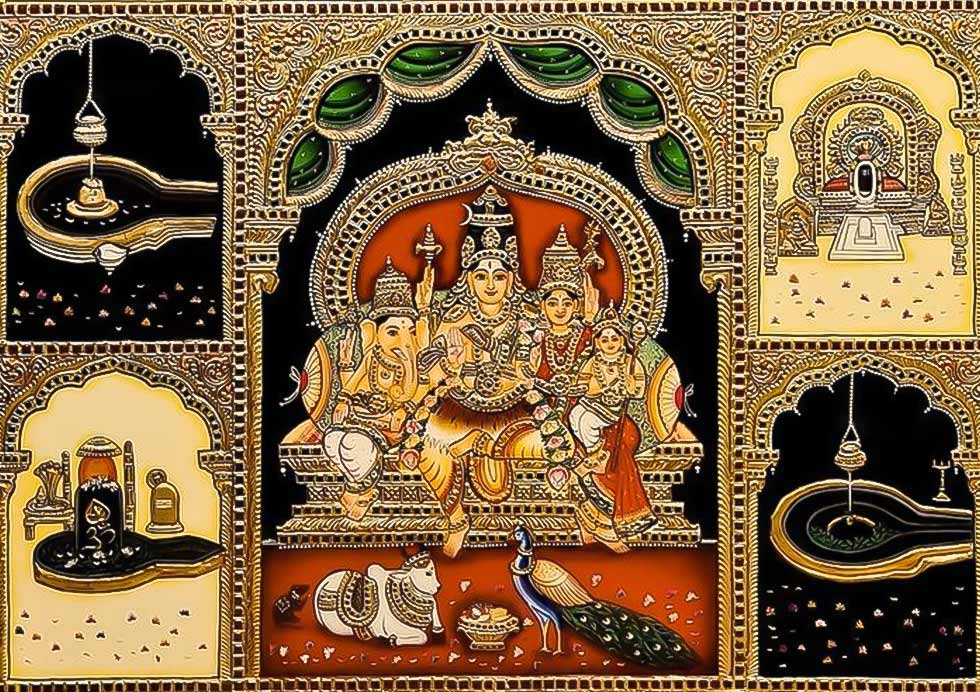
India is a pious land of spirituality, mysticism, and many sacred sites. 12 Jyotirlingas are among them. They manifest Lord Shiva. It is believed that these divine shrines manifest themselves & radiate Shiva’s purest energy. An overwhelming number of devotees from all over the world travel to the 12 Jyotirlingas of India to seek blessings and enlightenment. Each has its own unique legend and spiritual significance. So, let's talk more about the 12 Jyotirlingas, their story, significance, important rituals, festivals, etc., in detail.
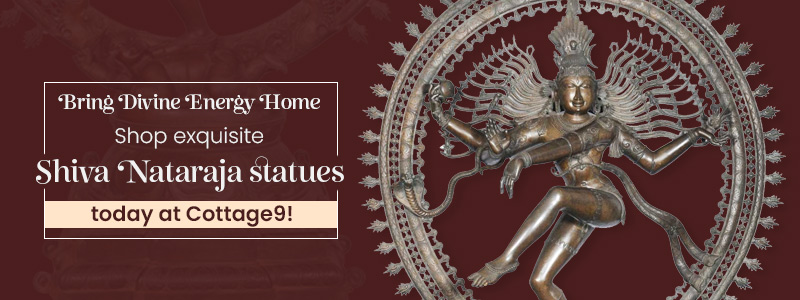
What are Jyotirlingas?
Simply put, a Jyotirlinga is a religious site representing the god Shiva. The word “Jyotirlinga” means the divine light of Lord Shiva. As per Hindu mythology, Shiva appeared as a fiery column of light at these lingams. All these are mentioned in ancient scriptures.
How Many Jyotirlingas in India?
Originally, there were 64 Jyotirlingas. 12 of them are considered the most pious and important. Even the Shiva Purana mentions this.
12 Jyotirlinga Names with Place
- Somnath – Gir Somnath, Gujarat
- Mallikarjuna – Srisailam, Andhra Pradesh
- Mahakaleshwar – Ujjain, Madhya Pradesh
- Omkareshwar– Khandwa, Madhya Pradesh
- Kedarnath – Rudraprayag District, Uttarakhand
- Bhimashankar – Pune, Maharashtra
- Kashi Vishwanath– Varanasi, Uttar Pradesh
- Trimbakeshwar – Nashik, Maharashtra
- Vaidyanath (Baidyanath) – Deoghar, Jharkhand
- Nageshwar – Daarukavanam, Gujarat
- Rameshwaram – Rameswaram Island, Tamil Nadu
- Grishneshwar – Ellora (near Aurangabad), Maharashtra.
12 Jyotirlinga Story

Always remember, all 12 Jyotirlingas reflect Lord Shiva’s divine presence and grace. They have a powerful legend. Moreover, their stories are mentioned in Hindu scriptures. They work as a source of deep spiritual inspiration for devotees.
Somnath
The Prajapati Daksha (the father-in-law of the Moon god) cursed him. So, he prayed to Lord Shiva at this place. It made him happy. So, he partially lifted the curse and allowed the moon to wax and wane. So, here Shiva manifested as Somnath- the lord of the moon.
Mallikarjuna
Kartikeya (the son of Lord Shiva and Parvati) isolated himself on Mount Krauncha. So, they visited here to console him. Remember, Shiva appeared as Mallikarjuna, and both deities live here together. So, it is a powerful Shiva-Shakti shrine.
Mahakaleshwar
A demon named Dushana terrorized Ujjain. So, devotees prayed to Shiva. He appeared from the ground as Mahakaleshwar and destroyed the demon. Remember, this Jyotirlinga faces south and is self-manifested.
Omkareshwar
A war between the Devas and Danavas (gods and demons) forced the Devas to pray to Lord Shiva. He became pleased with their devotion. So, he appeared in the form of Omkareshwar.
Kedarnath
After the Mahabharata war, the Pandavas expected Lord Shiva’s forgiveness. But he avoided them and appeared in the form of a bull. When Bhima tried to catch him, Shiva went into the ground. And, his hump reappeared at Kedarnath.
Bhimashankar
Shiva took a fierce form and ended the tyranny of the demon Tripurasura. Due to his intense energy, sweat fell and created the Bhima River. Then, he appeared as Bhimashankar Jyotirlinga.
Kashi Vishwanath
It is believed that Kashi (Varanasi) is Lord Shiva’s favorite city. It is often said that he always lives here and gives liberation (moksha) to anyone who dies at this place. So, devotees worship him as Vishwanath- the Lord of the Universe.
Trimbakeshwar
Sage Gautama prayed to bring the Godavari River to the earth. So, Shiva appeared here as Trimbakeshwar. This Jyotirlinga symbolizes Brahma, Vishnu, and Shiva in one form.
Feel free to get Wood Carved Brahma Wall Art from Cottage9. It is ideal for placement in spiritual or meditation spaces, living rooms, entryways, study areas, offices, wellness centers, yoga studios, gifts for housewarming, or religious occasions.
Moreover, we also have a Vishnu Perumal Statue and paintings. Explore available options and place your orders. Your shipment will reach the specified address quickly.
Vaidyanath
As the story goes, demon king Ravana worshipped Shiva. He offered his 10 heads to him. This made Shiva happy, and he appeared as Vaidyanath (the divine healer) to give his blessings. This Jyotilingam is believed to heal physical and spiritual ailments.
Nageshwar
The demon Daruka captured a devotee named Supriya. He prayed to Shiva for her rescue. So, he appeared, defeated the demon, and saved her. Here, he manifested as Nageshwar, the lord of snakes.
Rameshwaram
As per the story, after defeating Ravana, Lord Rama worshipped Shiva. He aimed to discharge the sin of killing a Brahmin. As advised by sages, he made a sand lingam. So, lord Shiva appeared, blessed him, and became Rameshwaram.
Grishneshwar
As the story goes, a religious lady named Grishna used to make and work clay lingams regularly. In spite of suffering personal losses, her devotion never decreased. This made Shiva happy. He revived her dead son and appeared as Grishneshwar, the lord of compassion.
Somnath
The Prajapati Daksha (the father-in-law of the Moon god) cursed him. So, he prayed to Lord Shiva at this place. It made him happy. So, he partially lifted the curse and allowed the moon to wax and wane. So, here Shiva manifested as Somnath- the lord of the moon.
Mallikarjuna
Kartikeya (the son of Lord Shiva and Parvati) isolated himself on Mount Krauncha. So, they visited here to console him. Remember, Shiva appeared as Mallikarjuna, and both deities live here together. So, it is a powerful Shiva-Shakti shrine.
Mahakaleshwar
A demon named Dushana terrorized Ujjain. So, devotees prayed to Shiva. He appeared from the ground as Mahakaleshwar and destroyed the demon. Remember, this Jyotirlinga faces south and is self-manifested.
Omkareshwar
A war between the Devas and Danavas (gods and demons) forced the Devas to pray to Lord Shiva. He became pleased with their devotion. So, he appeared in the form of Omkareshwar.
Kedarnath
After the Mahabharata war, the Pandavas expected Lord Shiva’s forgiveness. But he avoided them and appeared in the form of a bull. When Bhima tried to catch him, Shiva went into the ground. And, his hump reappeared at Kedarnath.
Bhimashankar
Shiva took a fierce form and ended the tyranny of the demon Tripurasura. Due to his intense energy, sweat fell and created the Bhima River. Then, he appeared as Bhimashankar Jyotirlinga.
Kashi Vishwanath
It is believed that Kashi (Varanasi) is Lord Shiva’s favorite city. It is often said that he always lives here and gives liberation (moksha) to anyone who dies at this place. So, devotees worship him as Vishwanath- the Lord of the Universe.
Trimbakeshwar
Sage Gautama prayed to bring the Godavari River to the earth. So, Shiva appeared here as Trimbakeshwar. This Jyotirlinga symbolizes Brahma, Vishnu, and Shiva in one form.
Feel free to get Wood Carved Brahma Wall Art from Cottage9. It is ideal for placement in spiritual or meditation spaces, living rooms, entryways, study areas, offices, wellness centers, yoga studios, gifts for housewarming, or religious occasions.
Moreover, we also have a Vishnu Perumal Statue and paintings. Explore available options and place your orders. Your shipment will reach the specified address quickly.
Vaidyanath
As the story goes, demon king Ravana worshipped Shiva. He offered his 10 heads to him. This made Shiva happy, and he appeared as Vaidyanath (the divine healer) to give his blessings. This Jyotilingam is believed to heal physical and spiritual ailments.
Nageshwar
The demon Daruka captured a devotee named Supriya. He prayed to Shiva for her rescue. So, he appeared, defeated the demon, and saved her. Here, he manifested as Nageshwar, the lord of snakes.
Rameshwaram
As per the story, after defeating Ravana, Lord Rama worshipped Shiva. He aimed to discharge the sin of killing a Brahmin. As advised by sages, he made a sand lingam. So, lord Shiva appeared, blessed him, and became Rameshwaram.
Grishneshwar
As the story goes, a religious lady named Grishna used to make and work clay lingams regularly. In spite of suffering personal losses, her devotion never decreased. This made Shiva happy. He revived her dead son and appeared as Grishneshwar, the lord of compassion.
Significance of Visiting 12 Jyotirlingas
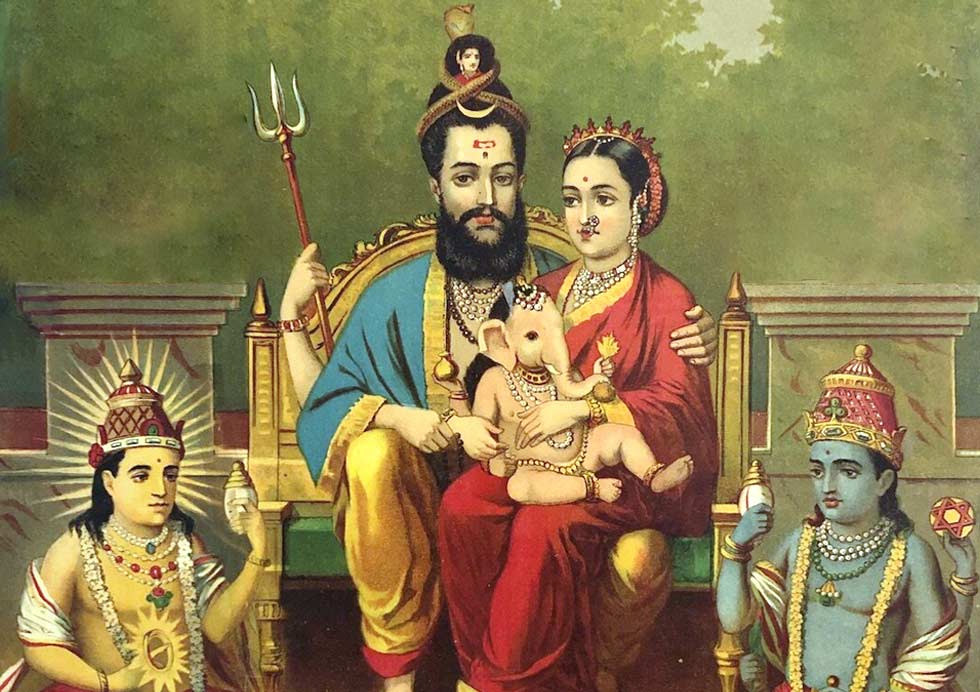
As per Hindu scriptures, a darshan (sacred glimpse) of the Jyotirlinga can purify people’s souls and wash away all sins. It will benefit them in many ways.
Spiritual Liberation (Moksha)
A large number of religious Hindus want to get Moksha ( liberation from the cycle of birth and death). And, the pilgrimage to any of the 12 jyotirlingas is considered a direct path toward it.
A large number of religious Hindus want to get Moksha ( liberation from the cycle of birth and death). And, the pilgrimage to any of the 12 jyotirlingas is considered a direct path toward it.
Fulfillment of Wishes and Desires
Many devotees visit the 12 Jyotirlinga temples to seek the lord’s blessing to fulfill their desires. It could be health, wealth, marriage, children, or success. They believe that worshipping Shiva with pure devotion at these shrines can please him, and their wishes are fulfilled.
Cultural and Regional Exploration
A good number of people embark on the 12 Jyotirlinga yatra to see different parts of the country. Always keep in mind that these Jyotirlingas are situated in different states. So, devotees can easily experience India’s big linguistic, cultural, architectural, and culinary diversity while touring religious shrines.
Religious Duty (Dharma)
For many devotees, visiting the 12 Jyotirlingas is a pious duty. Many families and even individuals take an oath to visit all twelve Jyotirlingas over time to cleanse their sins and enrich themselves spiritually.
Getting Inner Peace and Mental Clarity
Undoubtedly, modern life is very stressful. So, people turn to spirituality to find relief. The Jyotirlingas are situated in tranquil surroundings. They offer a peaceful atmosphere for meditation and other spiritual activities. They feel relaxed and rejuvenated after visiting Jyotirlingas.
Vows and Life Milestones
Many devotees visit the 12 Jyotirlingas to express their thanks to the god after the fulfillment of their Mannat (wish). These wishes could be the cure of a deadly disease, successful married life, having a child, recovery from loss, etc.
Connection to Lord Shiva
It is the most important reason to visit the 12 Jyotirlingas. Lord Shiva is known as the destroyer of evil and the god of transformation. He also symbolizes limitless power, compassion, and simplicity. By visiting these Jyotirlingas, they connect themselves with him and feel blessed.
Get beautifully designed Lord Shiva paintings and statues from Cottage9. Multiple options are available. Explore and place one or more orders. We are always ready to ensure the swift delivery of purchased paintings and statues to the specified address.
Get beautifully designed Lord Shiva paintings and statues from Cottage9. Multiple options are available. Explore and place one or more orders. We are always ready to ensure the swift delivery of purchased paintings and statues to the specified address.
Some Popular Rituals At the 12 Jyotirlingas
Abhishekam (Holy Bathing of the Lingam)
It is the most common ritual performed at all 12 Jyotirlingas. People pour water, milk, honey, ghee, curd, sandalwood paste over the Shiva Lingam, chant "Om Namah Shivaya. It helps them to purify their soul and seek divine blessings.
Bhasma Aarti at Mahakaleshwar (Ujjain)
This unique ritual is performed at the Mahakaleshwar Jyotirlinga in Ujjain. It’s an Aarti conducted by the main temple priests daily at 4:00 AM, using sacred ash (bhasma). It symbolizes the cycle of creation and destruction. As per belief, watching this Aarti eliminates the fear of death and promotes spiritual transformation.
Rudrabhishek Pooja
It is the most common ritual performed at all 12 Jyotirlingas. People pour water, milk, honey, ghee, curd, sandalwood paste over the Shiva Lingam, chant "Om Namah Shivaya. It helps them to purify their soul and seek divine blessings.
Bhasma Aarti at Mahakaleshwar (Ujjain)
This unique ritual is performed at the Mahakaleshwar Jyotirlinga in Ujjain. It’s an Aarti conducted by the main temple priests daily at 4:00 AM, using sacred ash (bhasma). It symbolizes the cycle of creation and destruction. As per belief, watching this Aarti eliminates the fear of death and promotes spiritual transformation.
Rudrabhishek Pooja
It is performed at all Jyotirlingas. In this process, priests and devotees chant Rudra mantras from the Yajurveda and offer pious items to the Shivling. It brings about divine protection, prosperity, health, and peace.
Fire Rituals
At some Jyotirlingas (such as Rameswaram and Bhimashankar), devotees and priests perform homams (fire rituals) like Laghu Rudra and Maha Rudra. They recite mantras in groups and offer items to the fire in honor of Lord Shiva. It helps them to get ancestral blessings, eliminate planetary doshas, and uplift themselves spiritually.
At some Jyotirlingas (such as Rameswaram and Bhimashankar), devotees and priests perform homams (fire rituals) like Laghu Rudra and Maha Rudra. They recite mantras in groups and offer items to the fire in honor of Lord Shiva. It helps them to get ancestral blessings, eliminate planetary doshas, and uplift themselves spiritually.
Shivarchana With Bilva Leaves
A good number of devotees offer Bilva (Bel) leaves to Lord Shiva at all Jyotirlinga shrines. Its trifoliate shape represents Lord Shiva’s trident. It is believed that this ritual cools his fierce form.
A good number of devotees offer Bilva (Bel) leaves to Lord Shiva at all Jyotirlinga shrines. Its trifoliate shape represents Lord Shiva’s trident. It is believed that this ritual cools his fierce form.
Festivals Celebrated at the 12 Jyotirlingas
Maha Shivratri – The Night of Shiva
Devotees widely celebrate Maha Shivratri at all 12 Jyotirlingas. It denotes the day of Shiva’s cosmic dance and his divine union with Goddess Parvati. They observe fast, perform night jagran (night vigil), and special abhishekams with milk, honey, water, and bel leaves. Feel free to get the Shiva Parvati Wood Carving from Cottage9. It is perfect for home or office placement, religious rituals, and gifts for someone special.
Devotees widely celebrate Maha Shivratri at all 12 Jyotirlingas. It denotes the day of Shiva’s cosmic dance and his divine union with Goddess Parvati. They observe fast, perform night jagran (night vigil), and special abhishekams with milk, honey, water, and bel leaves. Feel free to get the Shiva Parvati Wood Carving from Cottage9. It is perfect for home or office placement, religious rituals, and gifts for someone special.
Pradosh Vrat
During the waxing and waning phases of the moon, devotees celebrate this festival twice a month. They observe fast, perform special evening poojas to make lord shiva happy during the twilight hour.
Navratri and Durga Pooja
Many Jyotirlingas (such as Mallikarjuna and Grishneshwar) celebrate Navratri with great zeal. It’s because they are also associated with Shakti Peethas. You can get a Rare Old Wooden Panel of Durga Devi Sculpture from Cottage9 and make your celebration special.
Many Jyotirlingas (such as Mallikarjuna and Grishneshwar) celebrate Navratri with great zeal. It’s because they are also associated with Shakti Peethas. You can get a Rare Old Wooden Panel of Durga Devi Sculpture from Cottage9 and make your celebration special.
Kartik Purnima
It is celebrated in November. Devotees perform special lamp-lighting rituals, take holy baths, and engage in charity. It gives them immense blessings.
Panch Kedar Festival
This ritual is performed at Kedarnath Jyotirlinga. It honors five sacred Shiva temples in Uttarakhand. Devotees perform folk dances and visit the temple.
Shravan Maas (Sawan Month)
During this auspicious time (July–August), many devotees visit Jyotirlingas. They observe weekly fasts on Mondays (Shravan Somvar) and perform Abhishekam rituals.
Conclusion
The 12 Jyotirlingas are the centers of divine energy and spirituality. They have unique legacies and stories of devotion, sacrifice, and miracles. It doesn’t matter whether you are a seeker, a devotee, or simply a traveler; visiting these 12 Jyotirlingas is always fruitful. You will be able to connect deeply with the god Shiva, cleanse your sins, embark on a path to spirituality, and attain Moksha. Get all the required paintings and statues from Cottage9.

